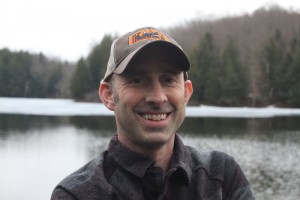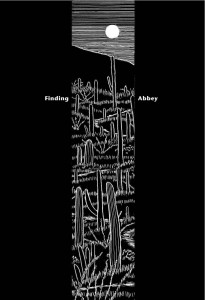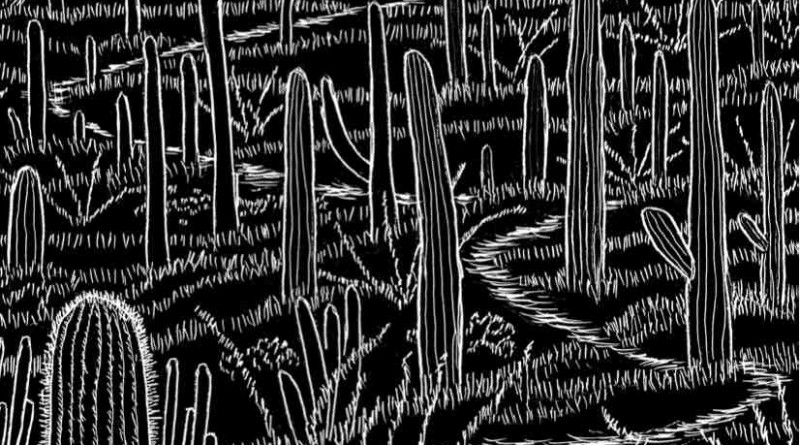Book review: Finding Abbey – The Search for Edward Abbey and His Hidden Desert Grave, by Sean Prentiss

The writer Edward Abbey is best known for his outspoken criticism of public land policies and advocacy for environmental issues. His books and essays have been a source of inspiration for environmentalists, explorers, anarchists and writers alike.
After his death in 1989 four of his closest friends buried him in an unmarked grave in the Cabeza Prieta Desert in Pima County, Arizona. For years, the location of his final resting place has been the subject of speculation, with none of his companions willing to divulge the precise location.
But that hasn’t kept devotees of Abbey from looking and one of the latest to take up the challenge is Vermont author Sean Prentiss who writes about his search in his latest book, “Finding Abbey – The Search for Edward Abbey and His Hidden Desert Grave.”
The book, due out later this spring from University of New Mexico Press, is his second book and is equal parts adventure and travel writing and as well as narrative journalism that spans the country.
Prentiss was introduced to Abbey while in college. Since then, Abbey’s work has formed the way Prentiss views his place in the world. From the book’s beginning, Prentiss attributes his wanderlust to the impression left by Abbey’s works “Desert Solitaire” and “The Monkey Wrench Gang.”
 Abbey first traveled west in 1944, shortly after graduating high school and spent significant periods in the four corners region of Colorado, New Mexico, Arizona and Utah while working as a ranger in a number of state parks. Prentiss’s kinship with Abbey is in their shared wanderlust and the yearning to break from the confines of a regimented daily existence. Indeed, before coming to Vermont, where he now works as a professor of English at Norwich University and a creative editor at Backcountry Magazine, Prentiss also had a largely itinerant lifestyle, working as a ski bum and a trail builder in Montana, New Mexico and Oregon during the summers.
Abbey first traveled west in 1944, shortly after graduating high school and spent significant periods in the four corners region of Colorado, New Mexico, Arizona and Utah while working as a ranger in a number of state parks. Prentiss’s kinship with Abbey is in their shared wanderlust and the yearning to break from the confines of a regimented daily existence. Indeed, before coming to Vermont, where he now works as a professor of English at Norwich University and a creative editor at Backcountry Magazine, Prentiss also had a largely itinerant lifestyle, working as a ski bum and a trail builder in Montana, New Mexico and Oregon during the summers.
While the two share a genuine love for the outdoors and the remaining wild places in the country, Prentiss struggles to find his place. While Prentiss knows he needs the modern world to make a living, he still feels compelled to get away from it whenever he can, to escape to the open road or his cabin in a remote region of Colorado to reflect, write and seek out adventure.
On this journey, the focus remains unflinchingly fixed on Prentiss and his firsthand reporting. We see him wandering cemeteries in rural Pennsylvania looking for Abbey family graves, driving to the frozen shores of Lake Michigan in the winter and contemplate books on Abbey’s life and touring the American Southwest in a pickup truck to interview Abbey’s friends, editors and co-conspirators.
Prentiss dwells on the underlying causes of events in his and Abbey’s lives and takes apparent satisfaction in the incidents where the two share (or Prentiss interprets they share) similar situations or emotions. In doing so, he applies every discovery, every interview regarding Abbey’s life and work to his own trajectory.
These personal interjections can feel intrusive and threaten to eclipse the character of the very man he’s trying to find, but while he may act as both storyteller and subject on this journey, he always manages to circle back to the task at hand. As he nears the end of his quest, it becomes apparent that the ultimate search isn’t just for Abbey’s bones in the Arizona desert, but a path for himself.
“All this searching might teach me things I need to learn about surviving in the city, about keeping it all or throwing it all away, about adventure, friendship, the lust for passion, the need for mystery in our lives,” he writes.
By finding Abbey, he postulates, he just might be able to find himself.
It’s a lofty goal, but with some convincing, readers will find something to envy in Prentiss’s exploration. While having all the makings of an expertly researched piece of narrative journalism, Prentiss also turns the magnifying glass on himself. What is most commendable about “Finding Abbey” is the narrator’s willingness to go the distance and explore, to think deeply about one of modern America’s most outspoken critics, and to inspire others to look for what he rightfully calls “a life worth living.”

